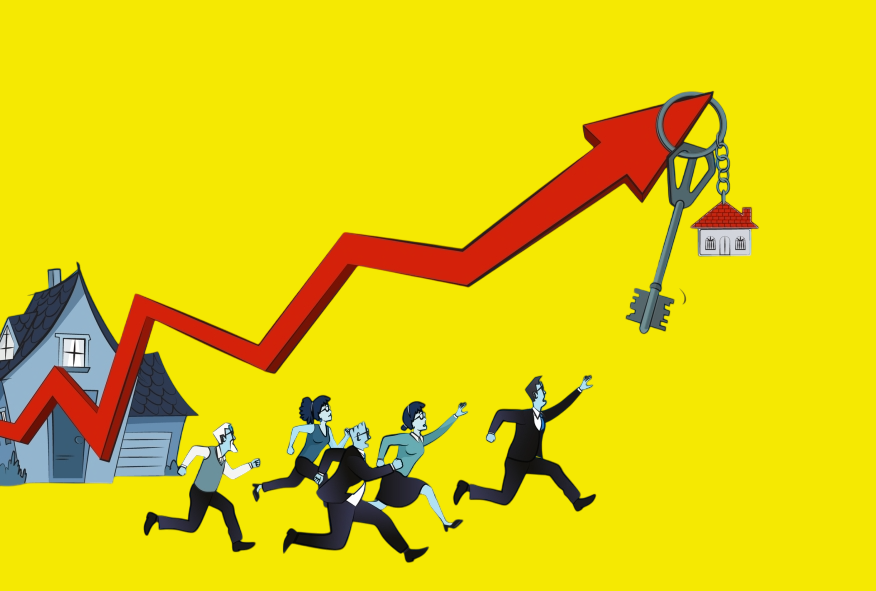
The real estate market is one of the most dynamic sectors of the global economy, constantly influenced by economic trends, government policies, and shifting consumer preferences. For prospective homebuyers, investors, and industry professionals alike, one question looms large: Will home prices rise or fall in 2025? Understanding the factors that drive these changes is crucial not only for making informed decisions but also for navigating the uncertainties that the future holds.
As we approach 2025, speculation about the trajectory of home prices is intensifying. From macroeconomic indicators such as interest rates and inflation to localized market conditions like housing inventory and migration trends, there are numerous variables at play. Analysts are keenly observing the impact of rising construction costs, potential regulatory changes, and fluctuating mortgage rates, all of which could dictate the direction of the market.
In this comprehensive analysis, we’ll explore the key drivers influencing home prices in 2025, the potential for regional market variations, and the broader implications for buyers, sellers, and investors. Whether you’re planning to purchase your first home, expand your investment portfolio, or sell property, this in-depth guide will help you anticipate market trends and position yourself strategically.
Factors Influencing Home Prices in 2025
1. Economic Trends and Their Impact
Economic performance remains one of the most significant determinants of home prices. As we near 2025, several economic factors are poised to shape the housing market:
- Interest Rates: The Federal Reserve’s monetary policy plays a crucial role in determining mortgage affordability. If interest rates rise, borrowing costs increase, potentially dampening demand and exerting downward pressure on home prices. Conversely, lower rates tend to stimulate demand, pushing prices upward.
- Inflation: High inflation can erode purchasing power but also drive up the cost of building materials and labor, leading to higher home prices.
- Employment Rates: A robust job market often boosts consumer confidence and purchasing power, driving demand for housing and increasing prices.
2. Housing Inventory and Construction Trends
The balance between housing supply and demand significantly influences pricing trends:
- Inventory Levels: In recent years, many markets have faced a shortage of available homes, which has driven prices higher. If construction ramps up in 2025, it could help alleviate shortages, stabilizing or reducing prices.
- Construction Costs: The cost of raw materials like lumber and steel, coupled with labor shortages, has been a major factor in rising home prices. If these costs continue to escalate, new homes will likely be priced higher, influencing the broader market.
3. Demographic Shifts and Migration Patterns
Changing demographics and migration trends will also play a pivotal role:
- Millennial Homebuyers: Millennials, now the largest generation of homebuyers, will continue to drive demand in suburban and urban markets.
- Remote Work Trends: The pandemic reshaped where people choose to live. Secondary markets and smaller cities may see price increases as remote work remains a viable option for many.
- International Migration: Increased immigration could also boost housing demand in major metropolitan areas.
4. Government Policies and Regulations
Government interventions in the housing market can have far-reaching consequences:
- Incentives for First-Time Buyers: Tax breaks and subsidies could encourage more buyers to enter the market, driving up demand.
- Rent Control and Zoning Laws: Policies aimed at affordable housing could impact investor sentiment and construction trends, indirectly affecting home prices.
Regional Variations in the Housing Market
The direction of home prices in 2025 is unlikely to be uniform across all markets. Regional variations will depend on factors like economic growth, population changes, and local policies.
- High-Growth Areas: Cities experiencing economic expansion, such as Austin, Nashville, and Raleigh, may see continued price increases due to strong demand.
- Cooling Markets: Overheated markets like San Francisco and New York City may experience price corrections as affordability becomes a pressing concern.
- Emerging Markets: Secondary cities with lower costs of living could attract more buyers, leading to localized price increases.
Implications for Buyers, Sellers, and Investors
For Buyers:
- Opportunity in Cooling Markets: Buyers may find better deals in regions where prices stabilize or decline.
- The Importance of Pre-Approval: With potential rate hikes, securing mortgage pre-approval will be critical to lock in favorable terms.
For Sellers:
- Maximizing Value: Sellers in high-demand markets should capitalize on current pricing trends before potential slowdowns.
- Preparing for a Balanced Market: In areas where inventory increases, sellers may face more competition and need to price competitively.
For Investors:
- Shifting Opportunities: Investors should focus on regions with strong job growth, population increases, and rental demand.
- Diversification: Expanding into multi-family units or commercial properties could mitigate risks associated with residential market fluctuations.
Conclusion
As 2025 approaches, the real estate market is poised at a crossroads, with potential outcomes hinging on a complex interplay of economic, demographic, and regulatory factors. Will home prices rise or fall in 2025? While the answer will vary by region and market segment, understanding the key drivers behind these trends can empower buyers, sellers, and investors to make well-informed decisions.
For buyers, 2025 could present opportunities to secure a home in cooling markets or to lock in favorable rates before they rise. Sellers might find it advantageous to act sooner in high-demand regions, while investors can uncover promising opportunities in emerging markets or rental properties. Across the board, preparation and market awareness will be key to navigating the year ahead.
Ultimately, the housing market’s trajectory in 2025 will reflect broader economic and social trends, offering both challenges and opportunities for stakeholders. Staying informed and adaptable will ensure that you remain ahead in this ever-evolving sector. For more insights into real estate trends and expert advice, stay connected with our platform to help you make the most of your real estate journey.





